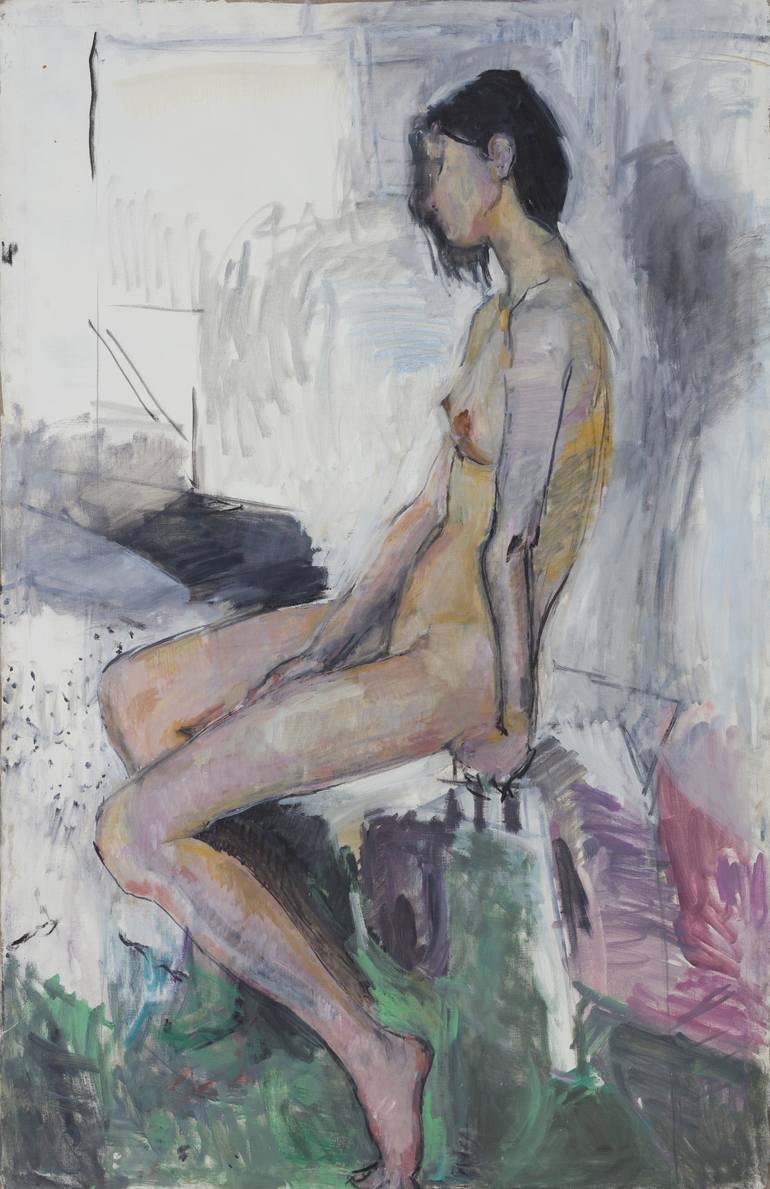




1100 Views
31
View In My Room
Painting, Oil on Canvas
Size: 34 W x 53 H x 1 D in
Ships in a Tube
1100 Views
31
Artist Recognition

Artist featured in a collection
ABOUT THE ARTWORK
DETAILS AND DIMENSIONS
SHIPPING AND RETURNS
Being in a melancholic state was appreciated by all, from Albrecht Dürer to Lars von Trier, both as a condition of having a broken spirit, a depression and as a complete self-immersion, as being detached from the outside world and having reached a turning point of the internal stress, a point after ...
Year Created:
2016
Subject:
Mediums:
Painting, Oil on Canvas
Rarity:
One-of-a-kind Artwork
Size:
34 W x 53 H x 1 D in
Ready to Hang:
Not Applicable
Frame:
Not Framed
Authenticity:
Certificate is Included
Packaging:
Ships Rolled in a Tube
Delivery Cost:
Shipping is included in price.
Delivery Time:
Typically 5-7 business days for domestic shipments, 10-14 business days for international shipments.
Returns:
14-day return policy. Visit our help section for more information.
Handling:
Ships rolled in a tube. Artists are responsible for packaging and adhering to Saatchi Art’s packaging guidelines.
Ships From:
Russia.
Customs:
Shipments from Russia may experience delays due to country's regulations for exporting valuable artworks.
Need more information?
Need more information?
My art is based on a single principle: artistic presentation of esthetic interests. These interests define the goals which I set to myself as an artist. Creating the Portrait of a Human Being is at the center of my interests, it is the end goal of my artistic work. I like watching people, their facial expressions, their body language, movements and silhouettes. Revealing human character and individuality through uncovering those of their aspects that prompt adoration and admiration—this task never makes me bored, and it will always be the source of my inspiration. I have a feeling that a person’s inner character, the portrait of his soul is always expressed through his special, unique, yet very tangible and specific body mobility. At times, when I am absorbed in my work, I feel as if I were like clay, pliable, clinging to someone and surrounding his form without omitting even a single small bump or corner so that the person’s inward nature can be experienced through the physical sensation of his movements. I encounter such people everywhere, those, whom I cannot but draw or paint when I see them, noticing their facial expressions, their movements and silhouettes, their choice of clothing. My artistic inspiration, my creative impulse, at times bordering on suspense, might happen suddenly, at any moment, and then I would use any available materials in order to capture my mental image, my insight and empathic vision. Jogging in the park, for example, I may see a complete stranger sitting gracefully, with his legs crossed, at the shore of the Yusupov Pond and smoking. Then I may get agitated noticing his disproportionately long, ungainly legs that look just like those of marionettes. Or the splash of his simple white scarf against the background of his black garment: a bubble coat, which underscores his expressionist stooped back, and jeans hugging his overlong legs. Or even how his scarf is awkwardly tied in front of him, dangling as on a child. Capturing his wild gaze—he stares at me with one eye, the other hidden by his hood—I stop there and start drawing sketches of him with my fingers on my phone screen. In painting I choose primacy of form over content. My heroes are blots, lines and colors; they play their own game, they unite themselves into their own narrative, yet reflect the person who is central to it. This painting is in front of me: a green blot climbs the blue zigzag against yellow background towards a long pink blot.
Artist Recognition

Artist featured by Saatchi Art in a collection
Why Saatchi Art?
Thousands of
5-Star Reviews
We deliver world-class customer service to all of our art buyers.
Global Selection of Original Art
Explore an unparalleled artwork selection from around the world.
Satisfaction Guaranteed
Our 14-day satisfaction guarantee allows you to buy with confidence.
Support Emerging Artists
We pay our artists more on every sale than other galleries.
